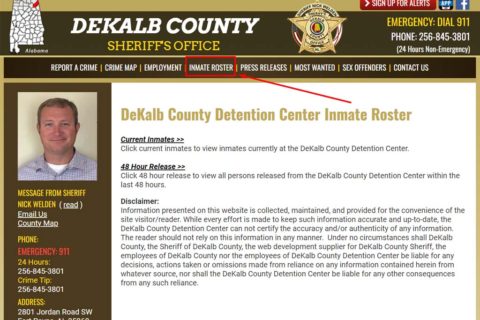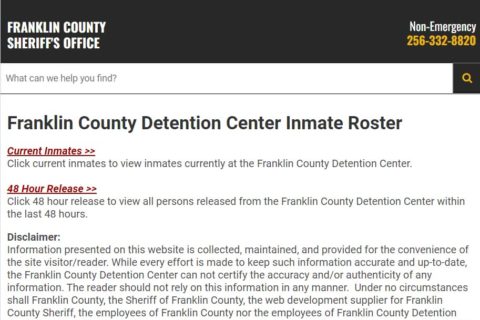Just like visiting state inmates, visiting federal inmates also requires you to complete the visitation form. The Form BP-A06289 is the visitation form you should fill out to visit federal inmates. Whether or not you complete the visitation form will determine your visitation approval.
If this is your first time to visit a federal inmate, you definitely need to understand how to fill out the visitation form completely. Thankfully! This post will show you the guide to complete the visitation form to visit federal inmates. Okay, let’s see our post to find the guide!
Filling Out the Visitation Form to Visit a Federal Inmate, Here’s How!
The visitation form BP-A0629 consists two sections:
- The upper part should be filled by the inmate
- The lower part should be filled by the visitor
In the upper section, the inmate needs to fill in their name, registration number, name and address of the institution in which they are held and the date of filling the form.
In the next section, there is a pre-written request by the inmate to the person whose details appear in the below sections that should be included as one of the approved visitors for the inmate.
Afterwards, the form also warns the visitor that part of the procedure to approve this application is by measuring their suitability via a criminal background check. Thus, the prison officials probably contact law enforcement agencies to check on the applicant’s background information.
The prospective visitor will also be required to complete both the questionnaire and release forms that form part of this form BP-A0629.
Last, the prospective visitor will be alerted that it is not mandatory to supply any of the said information and there are no penalties that will be considered against them. However, an incomplete application form can result in the suspension of the application process until all the important information is supplied. If you provide false information, it may result in a fine of not over 250,000 or 5-year imprisonment, or both.
Here’s step-by-step to fill the visitation form to visit a federal inmate!
- First, an inmate will be given a Visitor Information form when arriving at a new facility.
- Then, an inmate needs to complete their portion of the form and mails a copy to each prospective visitor.
- A prospective visitor also needs to fill out all remaining forms fields.
- A prospective visitor then sends the form that has been completed back to the inmate’s address (listed on the form)
- The Federal Bureau of Prisons will request more background information and possibly contact other law enforcement agencies or the NCIC.
- Last, the inmate will be notified when a visitor is not approved to visit and of course, it is the inmate’s responsibility to notify the prospective visitor.
Okay, that’s how to fill out the visitation form to visit a federal inmate. Well, completing the visitation form to visit a federal inmate is pretty straightforward, isn’t it?
What Are the Contents Available on the Visitation Form (Form BP-A0629)?
The visitation form (Form BP-A0629) is the form created by the Federal Bureau of Prisons that is used to check anyone who wants to visit an inmate housed at any of the federal prisons. Of course, the visitor, including a minor, will need to submit a duly-filled form BP-A0629 to the prison officials where an inmate is incarcerated.
On the visitation form, there are a number of information you should provide related to your personal information, here are they:
- The visitor’s legal name
- Date of birth
- Visitor’s race and sex
- Current telephone number including area code
- Current physical address including zip code
- The visitor’s US citizenship status
- Passport number
- SSN or Alien Registration number
- Driver’s license number and state of issuance
Afterwards, you should provide the following details on the visitation form:
- Your relationship with the requesting inmate
- If you intend to visit the named inmate
- If you knew this inmate before he/she got prisoned
- If so, how long have you known the inmate, and where this relationship developed
- Whether you have ever been convicted of a crime
- If so, you need to mention the number, place, date, and nature of the conviction
- If you are a former inmate, make sure to inform if you are currently on probation, parole, or any other type of supervision
- If so, you need to provide the name, address, and telephone number of the supervising officer
- When you intend to visit the inmate
- Whether you are in touch with other inmates via mail, phone, or official prison visits
- If so, make sure to inform the names of the inmates and their current location
Finally, there will be a section for the authorization to release information. This is a pre-written express authorization release request by the potential visitor to law enforcement agencies.
Of course, it directs the agencies to release any information that they may have related to your past criminal records, to the warden in charge where an inmate is housed. Furthermore, you will also need to sign the authorization to release information. If your age is below 18 years, the parent or legal guardian should sign on their behalf.
Additionally, the visitation form (BP-A0629 form) includes a template that provides instructions to Spanish-speaking inmates who are not probably fluent in English. Of course, it will help you understand the kind of information expected of them and where to complete those details.
Who Can Be Added in the Visitation Form?
An inmate can add any of the following person to the approved visitor’s list:
1. Immediate Family
- Mother
- Father
- Step-parent(s)
- Foster parent(s)
- Brothers
- Sisters
- Spouse
- Children
2. Relatives
- Grandparents
- Uncles
- Aunts
- In-laws
- Cousins
3. Other Types of Approved Visitors
- No more than 10 friends/associates
- Foreign officials
- Members of religious groups including clergy
- Members of civic groups
- Employers (former or prospective)
- Sponsors
- Parole advisors
- Attorneys
Well, in certain conditions such as when a prison first enters jail or may be transferred to a new jail, a visiting list may not exist yet. In this case, immediate family members may be allowed to visit, as long as they are verified by the information contained in the inmate’s Pre-Sentence Report.

A bookworm and researcher especially related to law and citizenship education. I spend time every day in front of the internet and the campus library.




